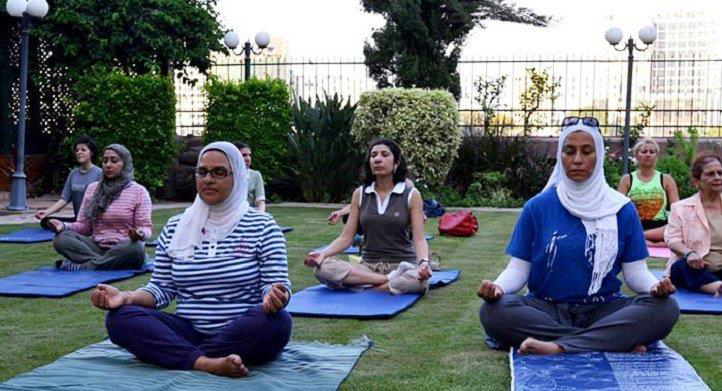
The discourse surrounding the compatibility of yoga with the Muslim faith has been met with varied opinions, with some voices within the tradition suggesting its impermissibility due to its roots in Eastern religions, such as Hinduism and Buddhism. However, upon a closer and more detailed examination of the theological underpinnings of Islam and the essence of yoga, one finds not only a lack of foundational conflict but also a remarkable convergence in the universal benefits and spiritual practices between yoga and Islamic prayer rituals. This essay aims to elucidate the theological grounds for the acceptance of yoga within the Islamic tradition, underscoring its benefits and highlighting the similarities with Islamic prayer, thereby making a case for its permissibility and spiritual relevance.
The Theological Non-conflict of Yoga within Islam
At the heart of the concerns expressed by some within the Muslim community is the belief that yoga’s origins in Hindu and Buddhist traditions inherently imbue it with religious connotations that may conflict with Islamic monotheism (Tawhid). However, a nuanced understanding of yoga reveals that it is, at its core, a practice aimed at enhancing the physical, mental, and spiritual well-being of the individual. The physical postures (asanas), breathing techniques (pranayama), and meditative practices central to yoga transcend religious boundaries, serving as tools for personal development rather than religious worship.
slamic jurisprudence (fiqh) prioritizes intention (niyyah) in determining the permissibility of an action. If yoga is approached with the intention of physical health, mental clarity, and spiritual tranquility without incorporating any elements of worship foreign to Islam, its practice aligns with Islamic principles. The Prophet Muhammad (peace be upon him) is reported to have said, “Actions are but by intention, and every man shall have only that which he intended” (Sahih al-Bukhari). This Hadith underscores the importance of intention, suggesting that yoga, practiced with appropriate niyyah, does not conflict with Islamic teachings.
Universal Benefits and Similarities to Islamic Prayer
Yoga offers numerous benefits that are universally acknowledged and can be appreciated within Islamic teachings, including physical health, mental balance, and spiritual tranquility. These benefits echo the holistic well-being Islam promotes through its own practices, such as prayer (Salah), fasting (Sawm), and charity (Zakat).
Furthermore, the act of yoga bears remarkable similarities to Islamic prayer rituals. The physical postures of Salah, including bowing (ruku) and prostration (sujood), mirror the humbling and grounding poses found in yoga. Both practices encourage mindfulness, presence, and a deep connection with the divine, fostering a sense of inner peace and spiritual elevation.
Moreover, Sufism, the mystical dimension of Islam, emphasizes the importance of remembering God (Dhikr) and achieving closeness to Him, which resonates with the meditative focus of yoga on inner silence and awareness. The Sufi practice of moving Dhikr and meditation shares its essence with yoga, underlining a pursuit of spiritual unity and transcendence beyond the superficial boundaries of form and tradition.
Conclusion
In conclusion, the theological foundation of Islam, centered on intention and the pursuit of well-being, does not inherently preclude the practice of yoga. Rather, when approached correctly, yoga aligns with Islamic teachings and offers a pathway to enhance physical, mental, and spiritual health. The similarities between yoga and Islamic prayer rituals further underscore the potential for yoga to enrich the spiritual lives of Muslims, bridging historical and cultural divides with a shared human quest for divine connection and personal peace. Far from being impermissible, yoga, with its universal benefits and resonances with Islamic spirituality, can and should be embraced as a complementary practice within the Muslim tradition.


